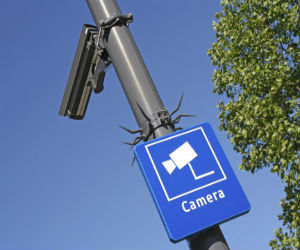False alarms, or nuisance alarms, often deter users from deploying intelligent video surveillance systems. However, through careful planning, installation, and understanding of intelligent systems, the data extracted from analytic functions could add immense value to a security and surveillance system.
The accuracy and reliability of video analytics has been debated in the security industry for quite some time. Despite the fact that algorithms have vastly improved accuracy and significantly reduce the number of nuisance alarms, there are still many that believe an "intelligent" system cannot be the relied on as the main form of surveillance on a premises.
Infiniti Research has forecast that the smart security market will see a CAGR of 18.6 percent to 2019.
Regardless of whether analytics and intelligent systems are going to take over the market, a recent report by Infiniti Research has forecast the smart security market will see a CAGR of 18.6 percent to 2019. One reason for this is the increased need for better, smarter security in lieu of increased terrorism around the world. As a result, certain environments highly benefit from a system utilizing video content analytics (VCA). However, in order to reap the full benefits of a smart system, proper installation that takes into considerations the needs of the user, environment, etc., is critical.
First Things First
 Before installing an intelligent solution, clearly
Before installing an intelligent solution, clearly
defining user goals and expectations is essential
to ensuring a successful deployment.
Long before cameras and systems are installed, several things need to be considered first. "Foremost, the client should understand the potential risk and threat within the organization and from external factors," advised Verghese Thirumala, MD of Maxitulin, a Malaysia-based systems integrator. "Companies are encouraged to undertake professional risk audits and analysis to fully understand the risk factors and how to mitigate it using an electronic security system."
Clearly defined goals are also important according to Jeremy Haltom, Sales Engineering Manager at RetailNext. "With goals defined, there can then be a clear idea of system requirements, for solutions are vastly different from traffic counting as compared to a full path analysis, for example." He further emphasized the need to understand how the collected data is going to be accessed, where, and by whom, which will help dictate where the data will live, either on premises or is cloud-based.
It is also important to understand the degree of accuracy users expect. Marty Tse, Director of the Intelligent Application Department in the Disaster Prevention and Surveillance Business Division at International Integrated Systems Incorporated explained how different applications are able to accept different degrees of accuracy. In transportation, for example, license plate recognition (LPR) is often used for traffic violations, in parking lots, at road tolls, etc. Tse pointed out that in these applications a high-degree of accuracy is needed. While 90-percent accuracy sounds high, when applied to a million cars, that is still 100,000 missed cars, which suddenly sounds much less acceptable, he said. On the other hand, in a space such as retail, where analytics are used more for marketing and business operations, 80- or 70-percent accuracy is acceptable, according to Tse.
Ensuring the Best Results
Once user requirements and the environment are understood, understanding the more technical aspects of the installation is next.
Anderson Lin, Senior Presales Expert in the Platform Technical Department of the Solutions Platform Division of NEC Taiwan explained that camera angle is critical to analytics' accuracy. For example, video data captured from a camera angled at 0 degrees or 40 degrees will not yield the most accurate results; however, video captured from cameras angled between 5 degrees and 30 degrees (depending on the application and environment) will provide the best data.
 Camera views should overlap to cover the
Camera views should overlap to cover the
blind spots of other cameras.
Proper camera angles and camera placement is also crucial to avoid having too many blind spots. No camera is free of blind spots, as the area directly beneath a camera is out of its view. Depending on the height and angle at which the camera is placed, the blind spot could cover a significant range around the base of the camera location. In order to provide complete coverage of an area, each camera must overlap and include the blind spot of the camera in front of it, said John Romanowich, CEO of SightLogix. "All effective perimeter security systems should be designed with such a 'zero blind spot' approach."
In outdoor applications, Romanowich highlighted the importance of determining a smart camera's true detection range (the distance at which a camera can detect an intruder walking "inbound" or directly toward the camera). "A person walking towards a smart camera produces very little motion compared to a person walking across the field of view, which makes the target harder for some video analytics to detect at longer ranges," he said. "Inbound is the most difficult detection task for an automated camera, so measuring the detection range in this manner avoids any gaps in coverage."
What is the Learning Curve?
The best results also depend on whether or not the user understands the system that is in place. In the beginning stages of an installation, cameras often need to be recalibrated and sensitivity adjusted for the best results. This can take anywhere from a few days to a few months, depending on the complexity of the environment and the type of analytics being used. During this phase, the analytics are also feed parameters so they know what to look for, which may also need to be adjusted.
In the beginning stages of an installation, cameras often need to be recalibrated and sensitivity adjusted for the best results.
User training is also important during this time. RetailNext's Haltom emphasized the need for proper user training. "Prior to installation and full deployment, a complete regimen of training should be conducted to not only train on the capability of the systems, but the direct business applications and solutions that need to be delivered.”
Proper training can also shorten the user learning curve according to M. Kumaraguru, MD of Maha Asia, a Malaysia-based SI. "In the typical agile intelligent video world, the focus of the user learning role has been around user interface design, usability, and other factors typically associated with verifying and validating that the intelligent video performs as the business owner has intended it to perform from a functional and usage perspective," he said.
Self-learning analytics software is also available and could possible reduce the so-called learning curve for intelligent systems; however, currently application is limited to simple analytics functions. "From a smart, machine-learning perspective, simple calculations around people counts, people coming and going, and fixture dwells can be compared to pre-determined thresholds to determine environmental changes that dictate real-time alerts and warnings," Haltom said. "In those limited applications, 'self-learning' can help shorten the learning curve."